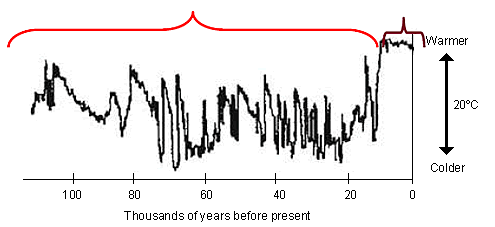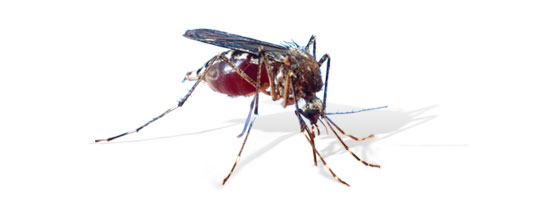Introduction
The link between climate change and infectious diseases is complex to say the least. Over the years animal diseases have emerged and evolved. Diseases have changed due to many reasons including the influence of environmental and ecological changes, changes in the movement of humans and their domesticated animals, the evolution of host and pathogens and changes in wildlife and vector distributions. These factors were relevant in prehistory and are relevant today (Arzt et al., 2010). However, with the earth warming up there is evidence of accelerated changes in habitat distribution changes that in turn may be affecting disease patterns and emergence of diseases. Climate change is not new to the earth history. Over the last 100,000 years the earth has experienced abrupt changes in temperature and the last 10,000 years the temperature has been unusually stable (Lovejoy 2008). During this time is when agriculture emerged, domestication of many animal species took place and human settlements happened. We have become to believe that a stable climate is the norm. However, we should not assume that the climate will remain stable. The first 90,000 years of this period indicated that instability is a more usual pattern and evidence is growing that humans are impacting greenhouse gas concentrations forcing the climate to change. Current levels of greenhouse gases concentrations have led since the mid-twentieth century to an increase of global average temperature of 0,75ºC and predictions indicate that this temperature will continue to increase (Manning et al., 2007). Therefore, there is no doubt that we are in a period of climate change and that we should expect profound implications for epidemiology.
Fig 1.Temperature for the last 100,000 years

Temperature change over the past 100,000 years as interpreted from a Greenland ice core oxygen isotope proxy.
The impact associated with climate change together with globalization is seen at many levels already. Changes in weather patterns, changes in ecosystems, people and animal migrations, changes in disease and vectors distributions are just to name a few. The implications of these changes are numerous and in some instances proving to be unpredictable. Therefore, climate change has become the new elephant in the room and understanding the changes and implications that directly or indirectly derived from it is essential to our survival or at least to the survival of life as we know it today.
How climate change contributes to disease
One consequence of significant and permanent changes to our climate is the alteration of disease patterns in humans and animals. These alterations may include the emergence of new disease syndromes and a change in the prevalence of existing diseases, particularly those spread by biting insects (Summers 2009). Vectors may reach out to wider geographical areas widening their distribution patterns to non-immune areas, and may recruit new vectors or new strains resulting in the spread to new hosts (Purse et al., 2005). Not all pathogens will be influenced by climate change in a similar manner and although for some their range may expand, for others it may contract (Lafferty 2009).
Predictions indicate that climate change will result in warmer temperatures and increased humidity which in turn will affect vegetation quality. These changes can influence arthropod survival and arthropod patterns. Of all changes associated to climate, the impact on arthropods and its distribution is the most evident. Warmer temperatures result in increasing viral titers within vectors as well as vector survival from season to season and increase in biting frequency (Reiter 2001). Therefore, increases in temperature can result in changes in the number of vector generations and overall abundance of insect populations which in turn can influence vector population dynamics and disease transmission (de La Rocque et a., 2008). Understanding vector capacity is key to understanding disease dynamics. Many significant livestock diseases have insects (mosquitoes or ticks) as part of their transmission cycle. Bluetongue disease in cattle, African swine fever in pigs and Rift valley fever in ruminants are just to name a few. In humans, malaria is the most significant.
Rainfall patterns may also change as a result of climate change and those can also have a clear impact on the life-cycle of pathogens and disease (de La Rocque et al., 2008). In particular the unexpected accumulation of water can result in nesting sites for mosquitoes to breed and expand, and as a result serve as reservoirs and transmitters for diseases. Besides changes in rainfall patterns, climate change can result in increase frequency of severe climatic events which can result in a more important feature affecting vector distribution than the changes in the average climatic conditions by itself. These changes often are regional and can be significant and have a greater impact for the specific affected region.

Rodent population density and distribution is highly sensitive to climate patterns and human distribution also (Semenza and Bettina 2009). Rodents can act as both direct hosts and hosts for arthropods such as fleas and ticks as is the case for plague (Yersinia pestis). Temperate climates and heavy precipitation favor the development of rodent populations which can result in increased human interaction. This is especially important for viruses such as the hantaviruses where mice and rats are the natural reservoirs. Increase in rodent populations can facilitate these viruses to enter in contact with humans, especially in urban areas or in areas where inadequate hygiene conditions contribute to rat infestations.
By changing the conditions that are suitable for vectors and pathogens, climate change has the potential to alter exposure of human and animal populations to significant infectious diseases (Dobson 2009). Therefore disease agents may expand into altitudes and latitudes where they were not present before as it has been documented for malaria (Lindsay and Martens 1998). In turn this can affect the exposure of populations to new pathogens and the reaching into areas where new hosts are affected. The lack of immunity in these populations can have a devastating effect resulting in increased mortality and morbidity rates (Dobson 2009)





